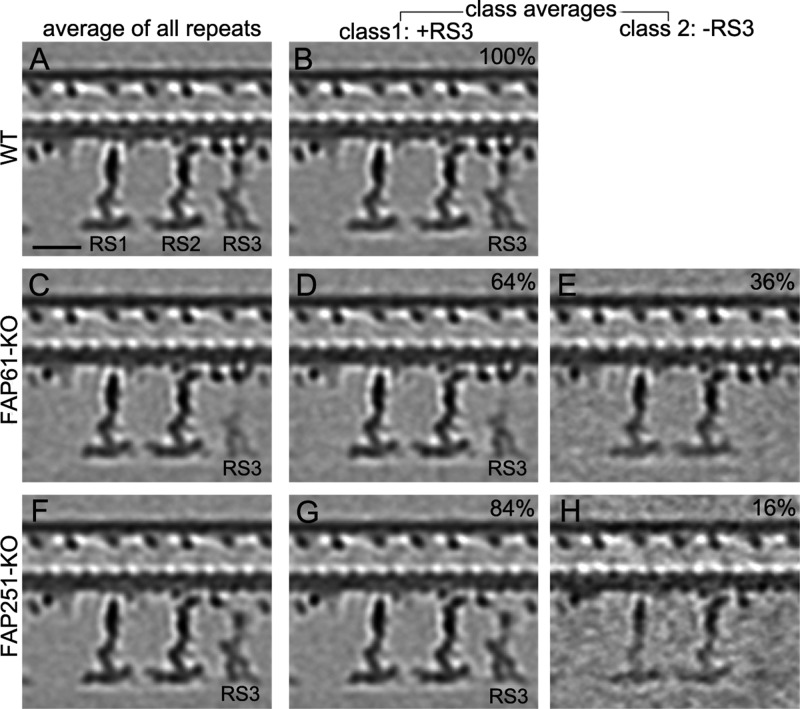FIGURE 4:
Classification analysis of RS3 in cilia from FAP61-KO and FAP251-KO. Longitudinal slices of the averaged 96-nm repeats show the presence (class 1: +RS3) or absence (class 2: –RS3) of the main distal part of RS3 in WT (A, B) and the CSC-knockout mutants FAP61-KO (C–E) and FAP251-KO (F–H). Whereas RS3 is present in all WT 96-nm repeats (100%, B), it is missing from 36% and 16% of the 96-nm repeats from FAP61-KO (E) and FAP251-KO (H), respectively. The loss of RS3 on some of the 96-nm repeats resulted in reduced RS3 density in the mutant averages, including all repeats (C, F), especially in FAP61-KO (C). Even in the class average in which RS3 is present (D, G), the mutant RS3 lacks parts of the stem region in FAP61-KO (D) or the arch-like RS base in FAP251-KO (G), respectively. Note that although the distal part of RS3 was present in 64% of FAP61-KO repeats (D), the class 1 (+RS3) average still shows a slightly reduced distal RS3 density; this could be because a large part of the RS3 stem is missing in the FAP61-KO, so that the stem connection between the distal and basal parts of RS3 is greatly reduced and likely less stable, leading to a somewhat flexible position of the distal part of RS3 in individual repeats (positional heterogeneity) and blurring of the structure in averages as compared with WT. Bar, 20 nm.

